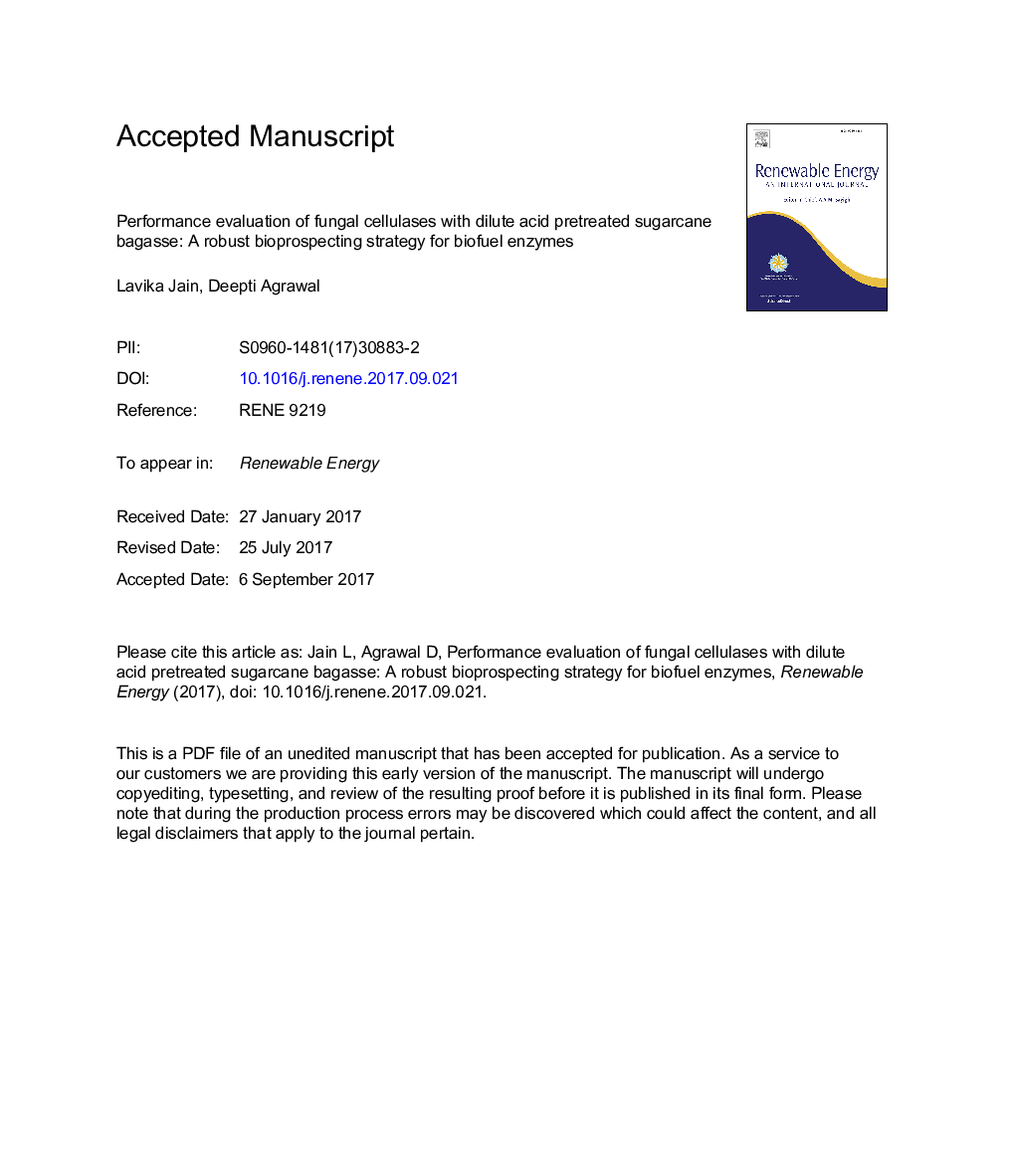| Article ID | Journal | Published Year | Pages | File Type |
|---|---|---|---|---|
| 6765317 | Renewable Energy | 2018 | 23 Pages |
Abstract
Bioprospecting is lucrative tool to explore novel, efficient and cheap cellulases catering “second generation biofuels” sector. In this study we propose performance evaluation of fungal cellulases with dilute acid pretreated sugarcane bagasse, as robust bioprospecting strategy for biofuel enzymes. Nine cellulolytic fungi were purified from wood decaying and termite rich zones of CSIR-IIP, India. Microscopic examination revealed that Penicillium and Aspergillus were the predominant genera among various cellulolytic fungi. After primary and secondary screening under submerged and solid state fermentation respectively, Isolate 3 (Aspergillus sp.) emerged as best hypercellulolytic strain. Under SSF, it exhibited a maximum of â¼956 U/g endoglucanase and 167 U/g cellobiase activities on 5th day under optimized assay conditions. However, benchmarking shortlisted fungal cellulases by saccharifying acid pretreated sugarcane bagasse yielded surprising results. In spite of exhibiting maximum endoglucanase and cellobiase activity of 207 U/g and 37U/g respectively on day 4th, cellulase cocktail of Isolate 4 released 6.83 g/L and 5.41 g/L of total reducing sugars and glucose respectively at 60 °C (pH 4.0) after 72 h. These results showed that Isolate 4 phylogenetically confirmed as Talaromyces verruculosus IIPC 324 produced robust and specific cellulase cocktail for efficient hydrolysis of sugarcane bagasse.
Related Topics
Physical Sciences and Engineering
Energy
Renewable Energy, Sustainability and the Environment
Authors
Lavika Jain, Deepti Agrawal,
